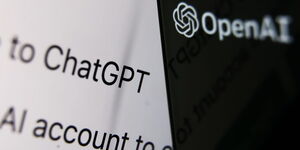Parents are among Kenyans who are up in arms after a wave of attacks on online classes and meetings in Kenya saw pornography streamed.
Parents and guardians at a private primary school in Nairobi's Lavington area, for instance, demanded that the school stop administering classes through the video chat service Zoom after classes were interrupted with streams of pornography on Tuesday, April 28.
A virtual meeting of the Institution of Engineers of Kenya (IEK) that had over 150 engineers online was also hijacked on Thursday, April 16, and pornography streamed.
Zoom-Bombing
Zoom-bombing, as the name suggests, refers to unwanted intrusion in online video chat services such as Zoom, disrupting chats such as meetings and classes.
Thanks to the Covid-19 pandemic, working and learning from home has become the new norm, with services such as Skype and Zoom adopting millions of new users.
Concerns about privacy and security have, however, been raised with several cases making the need to take various measures to safe-guard your security apparent.
Here are a few tips on how to prevent Zoom-bombing, particularly if you plan on using Zoom for virtual classes or meetings.
Update Zoom Software
To ensure you are able to quickly access the relevant security options, it is important to update the Zoom applications on your devices including your computer and phone.
Particular options for the host were only made available after user numbers for the platform surged due to the implications of the pandemic.
Use a Unique ID, Password for Calls
A Personal Meeting ID (PMI) is generated once you create a Zoom account. While your PMI works well for recurring meetings with close associates and friends, creating a Unique ID for your online meetings or classes will help keep your calls secure.
The PMI never expires and therefore, if accessed by the wrong person, it would be quite easy for them to interrupt the meeting.
Creating a Unique ID makes your virtual meeting more secure as there is less chance of it being accessed by the wrong parties.
One can also, however, add a password to their meetings even when using PMI to provide an added layer of security.
Make Sure Only Hosts Can Share Their Screens
A lot of the hacks so far witnessed in Kenya have been due to an option that allows participants in the meeting to share their screens.
This feature has been used by rogue participants to stream pornography, interrupting meetings and classes. As the meeting host, one is able to ensure that only the host can share their screen.
By going to Personal > Settings > In Meeting (Basic), one can enable the setting to ensure that only the host is able to share their screen.
Lock a Meeting After it Starts
To prevent new participants interrupting your online class or meeting after it starts, make sure to lock your meeting once it begins.
This also blocks rogue participants from using different accounts to crash the meeting.
As the host, you have the ability to do several other things to control the meeting; including kicking out participants or putting them on hold and disabling their cameras.












